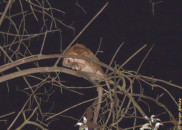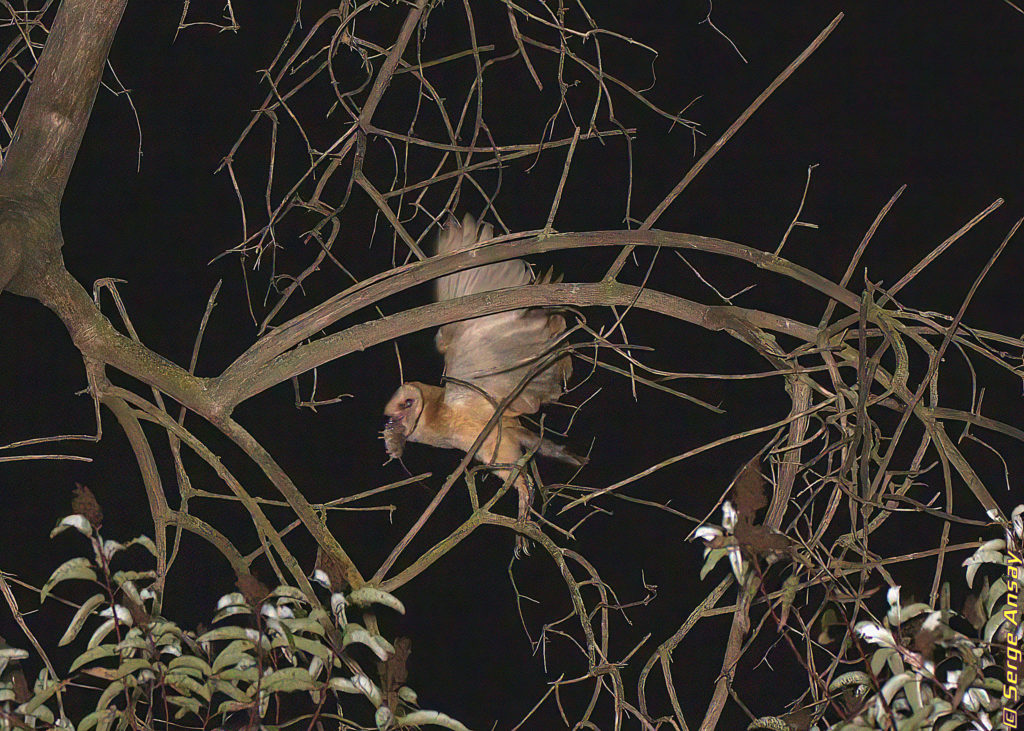Yes, folks, this was quite a surprise for me. The very evening I released my post about barn owls, last weekend, as I stepped outside to go for my usual after-dinner walk, I went across the street to take a test picture and I saw that there was an owl on the dead tree. I aimed my flashlight and discovered… well you can see for yourself.
WARNING: some of these pictures are a bit gruesome. So, if you are sensitive you might want to skip that series.

Last time, I didn’t go over a few things about barn owls, for fear of being too lengthy. I will take advantage of this occasion to complete the picture.
I did mention the excellent hearing of this owl. But the following text (found in this website:
https://www.allaboutbirds.org/guide/Barn_Owl/overview) explains this in more details:
The Barn Owl has excellent low-light vision, and can easily find prey at night by sight. But its ability to locate prey by sound alone is the best of any animal that has ever been tested. It can catch mice in complete darkness in the lab, or hidden by vegetation or snow out in the real world.
However, I was quite puzzled by this other statement in the same page:
Barn Owls swallow their prey whole—skin, bones, and all. About twice a day, they cough up pellets instead of passing all that material through their digestive tracts. The pellets make a great record of what the owls have eaten, and scientists study them to learn more about the owls and the ecosystems they live in.
The pictures in this post seem to contradict this statement, since we can clearly see the owl ripping off flesh from the mouse it holds down with its claw.
Anyway, here are a few other interesting facts:
- The barn owl is monogamous. The male is slightly smaller than the female.
- This bird will nest in caves and hollow trees, as well as artificial sites such as barn lofts, church steeples, abandoned houses, dry wells, crevices under bridges, nest boxes. Where no existing cavities available, the barn owl will dig a hole in a dirt bank. It won’t build a real nest. Instead, it will simply arrange debris into crude depression.
- Fossil records of barn owls have been found that go back to the Eocene, a geological period going back up to 56 million years. In other words, this bird has been around for a long time.
- My research revealed a variety of opinions regarding the barn owl lifespan. Some state that they live an average of 4 years in the wild, some say 10 to 15. And some also stated that they can live up to 25 years in captivity.





